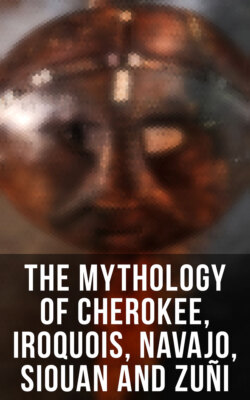Читать книгу The Mythology of Cherokee, Iroquois, Navajo, Siouan and Zuñi - James Mooney - Страница 32
На сайте Литреса книга снята с продажи.
The Iroquois
ОглавлениеThe Iroquois—Hurons, Tuscaroras, Susquehannocks, Nottoways, and others—occupied much of the country from the St. Lawrence River and Lake Ontario to the Roanoke. Several of their tribes banded themselves into a confederacy known as the 'Five Nations,' and these comprised the Cayugas, Mohawks, Oneidas, Onondagas, and Senecas. The Cherokees, dwelling in the valleys of East Tennessee, appear to have been one of the early offshoots of the Iroquois. A race of born warriors, they pursued their craft with an excess of cruelty which made them the terror of the white settler. It was with the Iroquois that most of the early colonial wars were waged, and their name, which they borrowed from the Algonquins, and which signifies 'Real Adders,' was probably no misnomer. They possessed chiefs who, strangely enough, were nominated by the matrons of the tribe, whose decision was confirmed by the tribal and federal councils. The 'Five Nations' of the Iroquois made up the Iroquois Confederacy, which was created about the year 1570, as the last of a series of attempts to unite the tribes in question. The Mohawks, so conspicuous in colonial history, are one of their sub-tribes. Many of the Iroquoian tribes "have been settled by the Canadian Government on a reservation on Grand River, Ontario, where they still reside.... All the Iroquois [in the United States] are in reservations in New York, with the exception of the Oneida, who are settled in Green Bay, Wisconsin. The so-called Seneca, of Oklahoma, are composed of the remnants of many tribes ... and of emigrants from all the tribes of the Iroquoian Confederation." In 1689 the Iroquois were estimated to number about twelve thousand, whereas in 1904 they numbered over sixteen thousand.
